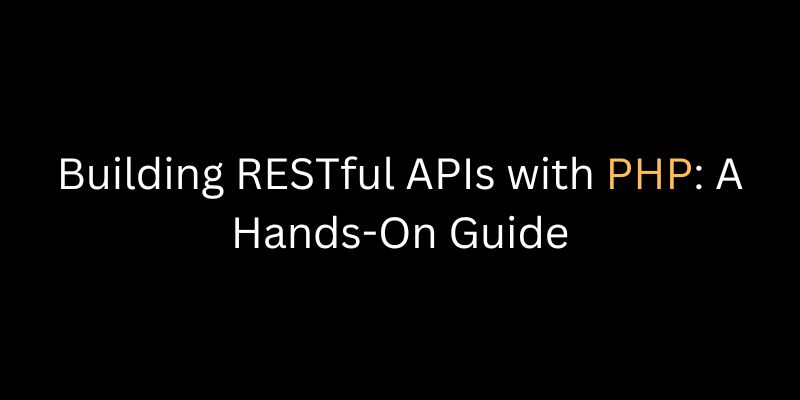
In the rapidly evolving world of web development, building RESTful APIs has become an essential skill for any programmer. RESTful APIs provide a standardized way of communication between different systems and enable the exchange of data in a flexible and efficient manner.
This hands-on guide will walk you through the process of building RESTful APIs with PHP, equipping you with the knowledge and skills needed to create robust and scalable APIs. Join PHP Training in Chennai at FITA Academy to become a PHP Developer. PHP Course in Chennai provides 100% placement assistance. Enrol here to get a better future.
Understanding RESTful APIs:
Before diving into the implementation details, it’s important to understand the fundamentals of RESTful APIs. REST, which stands for Representational State Transfer, is an architectural style defining principles for building web services. RESTful APIs follow these principles and leverage the HTTP protocol to perform various operations on resources.
Designing the API Architecture:
To design an effective API architecture, it’s crucial to plan the endpoints and resources carefully. Begin by identifying the core entities or objects that your API will interact with. Each entity should have a unique URL endpoint, representing a specific resource. For example, if you are building an API for a blog platform, you might have endpoints for articles, users, and comments.
Implementing the API with PHP:
PHP, a popular server-side programming language, provides robust tools and libraries for building RESTful APIs. Here are the key steps involved in implementing the API using PHP:
1. Setting Up the Development Environment
Before getting started, ensure that you have PHP installed on your machine. You can download the latest version of PHP from the official PHP website. Additionally, a local development server like Apache or Nginx will be required to test your API locally.
2. Choosing a PHP Framework
While it is possible to build RESTful APIs from scratch, utilizing a PHP framework can greatly simplify the development process. Frameworks like Laravel, Symfony, and Slim provide built-in features and conventions for building APIs, such as routing, request handling, and database integration. Choose a framework that aligns with your project requirements and familiarity.
3. Defining Routes and Controllers
In a PHP framework, routes define the URLs that your API will respond to, and controllers handle the incoming requests. Define routes for each resource, specifying the HTTP methods they support (GET, POST, PUT, DELETE). Associate each route with a corresponding controller method that will handle the request and return the appropriate response.
4. Handling Authentication and Authorization
Securing your API is crucial to protect sensitive data and ensure that only authorized users can access certain resources. Implement authentication mechanisms like OAuth, JWT, or API keys to validate requests. Additionally, enforce authorization rules to control access based on user roles and permissions.
5. Data Validation and Sanitization
To maintain data integrity and prevent security vulnerabilities, it’s essential to validate and sanitize the incoming data. PHP frameworks often provide libraries or components for handling data validation and sanitization. Implement these mechanisms to ensure that the data meets the required criteria before processing it.
6. Testing and Documentation
Thoroughly test your API endpoints to identify and fix any bugs or issues. Use testing tools like PHPUnit or Postman to automate the testing process. Additionally, create comprehensive documentation for your API, including endpoint descriptions, request/response examples, and usage instructions. Well-documented APIs are easier to integrate and promote developer adoption.
Conclusion:
Building RESTful APIs with PHP can be an exciting and rewarding endeavor. By following the principles of REST and utilizing the power of PHP frameworks, you can create robust and scalable APIs that facilitate seamless communication between different systems.
Remember to plan your API architecture, choose the right tools and libraries, and prioritize security and documentation. With practice and hands-on experience, you’ll master the art of building efficient and reliable APIs with PHP. Learn the advanced PHP frameworks through PHP Online Course. FITA Academy offers the best PHP course online from experienced trainers. Enquire immediately for course details.
Now, armed with this knowledge, you’re ready to embark on your journey to become an expert in building RESTful APIs with PHP. Happy coding!
